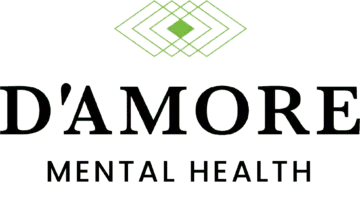Borderline Personality Disorder (BPD) affects approximately 1.4% of adults in the United States, yet it remains one of the most misunderstood mental health conditions. While many people associate BPD with a single set of symptoms, mental health professionals recognize that this complex disorder can manifest in distinctly different ways. Understanding the four main types of BPD can help individuals and their loved ones better recognize symptoms and seek appropriate treatment.
At D’Amore Mental Health, we specialize in providing comprehensive care for individuals with personality disorders, including borderline personality disorder. Our experienced clinical team understands that effective treatment begins with accurate diagnosis and a thorough understanding of how BPD uniquely affects each person.
What is Borderline Personality Disorder?
Borderline Personality Disorder is a mental health condition characterized by intense emotional experiences, unstable relationships, and difficulty regulating emotions. According to the National Institute of Mental Health, people with BPD often struggle with a distorted sense of self, fear of abandonment, and impulsive behaviors that can significantly impact their daily lives and relationships.
The Diagnostic and Statistical Manual of Mental Disorders (DSM-5) outlines nine criteria for BPD diagnosis, but individuals must meet only five to receive a diagnosis. This flexibility in diagnostic criteria helps explain why BPD can present so differently from person to person, leading mental health professionals to identify distinct subtypes of the disorder.
The 4 Types of Borderline Personality Disorder
1. Discouraged Borderline (Quiet BPD)
The discouraged borderline subtype, often called “quiet BPD,” is characterized by inward-directed emotions and behaviors. Individuals with this type typically turn their intense feelings inward rather than expressing them outwardly.
Key characteristics include:
- Extreme self-criticism and self-blame
- Tendency to withdraw from relationships when stressed
- Difficulty expressing anger or frustration directly
- Persistent feelings of emptiness and depression
- Self-harm behaviors or suicidal ideation
- Appearing compliant or “easy-going” to others
People with discouraged BPD often struggle silently, making their condition difficult for others to recognize. They may appear highly functional on the surface while experiencing intense emotional turmoil internally. This internalization of symptoms can lead to delayed diagnosis and treatment, and may be associated with depression and anxiety disorders.
2. Impulsive Borderline
The impulsive borderline subtype is characterized by external expression of emotions and behaviors that are often unpredictable and potentially dangerous.
Key characteristics include:
- Sudden outbursts of anger or rage
- Risky sexual behaviors or substance abuse
- Reckless spending or gambling
- Dangerous driving or other thrill-seeking activities
- Difficulty maintaining stable employment or relationships
- Dramatic mood swings that others can easily observe
Individuals with impulsive BPD often struggle with immediate gratification and may engage in behaviors that provide temporary relief from emotional pain but create long-term consequences. Their symptoms are typically more visible to others, which can lead to earlier intervention and treatment. This subtype may also co-occur with dual diagnosis conditions involving substance abuse.
3. Petulant Borderline
The petulant borderline subtype combines features of both inward and outward expression, often manifesting as passive-aggressive behaviors and unpredictable mood shifts.
Key characteristics include:
- Passive-aggressive communication patterns
- Feelings of being misunderstood or unappreciated
- Alternating between clingy and distant behaviors
- Resentment toward others, particularly authority figures
- Difficulty accepting responsibility for actions
- Unpredictable emotional reactions
People with petulant BPD often feel that others don’t understand them or give them the support they need. They may alternate between seeking attention and pushing others away, creating confusion in their relationships and making it difficult for loved ones to provide consistent support.
4. Self-Destructive Borderline
The self-destructive borderline subtype is characterized by behaviors that are harmful to oneself, often as a way to cope with intense emotional pain or to communicate distress to others.
Key characteristics include:
- Self-harm behaviors such as cutting or burning
- Suicidal thoughts or attempts
- Eating disorders or extreme dieting
- Substance abuse as a coping mechanism
- Engaging in relationships with people who are harmful
- Sabotaging success or positive opportunities
Individuals with self-destructive BPD often struggle with feelings of worthlessness and may unconsciously seek to confirm their negative self-beliefs through harmful behaviors. This subtype requires immediate professional intervention due to the high risk of serious self-harm or suicide. If you or someone you know is experiencing suicidal thoughts, please reach out for help immediately by calling the 988 Suicide & Crisis Lifeline or visit our suicide prevention resources.
Understanding the Overlap
It’s important to note that these four types are not mutually exclusive. Many individuals with BPD exhibit characteristics from multiple subtypes, and their presentation may change over time or in different circumstances. The subtype framework, while not officially recognized in the DSM-5, is used by many mental health professionals to better understand and treat the varied ways BPD can manifest. Research from the National Center for Biotechnology Information suggests that understanding these subtypes can improve treatment outcomes by allowing for more targeted therapeutic approaches.
Treatment Approaches for Different BPD Types
Effective treatment for borderline personality disorder requires a comprehensive approach that addresses the specific needs and challenges associated with each subtype. At D’Amore Mental Health, we utilize evidence-based treatments that have proven effective for BPD, including:
Dialectical Behavior Therapy (DBT)
DBT is considered the gold standard for BPD treatment and is effective for all subtypes. This therapy, developed by Dr. Marsha Linehan specifically for BPD, focuses on teaching four core skills: mindfulness, distress tolerance, emotion regulation, and interpersonal effectiveness. According to research published by the National Institute of Mental Health, DBT has shown significant effectiveness in reducing self-harm behaviors and improving overall functioning in individuals with BPD. Our DBT program helps individuals develop healthier coping strategies and improve their relationships.
Cognitive Behavioral Therapy (CBT)
CBT helps individuals identify and change negative thought patterns that contribute to emotional distress and problematic behaviors. This approach is particularly beneficial for addressing the self-criticism common in discouraged BPD and the impulsive behaviors seen in other subtypes.
Individual Therapy
One-on-one individualized counseling sessions provide a safe space to explore personal experiences, develop coping strategies, and work through trauma that may contribute to BPD symptoms. Our experienced therapists tailor their approach to each individual’s specific needs and subtype presentation.
Group Therapy
Group therapy offers valuable peer support and opportunities to practice interpersonal skills in a supportive environment. Many individuals with BPD benefit from connecting with others who understand their experiences and challenges.
Family Therapy
BPD affects not only the individual but also their family members and loved ones. Family therapy helps improve communication, establish healthy boundaries, and create a supportive home environment that promotes recovery.
The Importance of Professional Diagnosis
While understanding the different types of BPD can provide valuable insight, it’s crucial to seek professional evaluation for accurate diagnosis and treatment planning. Mental health professionals use comprehensive assessments to determine the most appropriate treatment approach based on individual symptoms, history, and circumstances. You can learn more about our admissions process and how we conduct thorough evaluations.
Self-diagnosis or attempting to categorize yourself or others based on these subtypes can be harmful and may delay appropriate treatment. If you recognize symptoms of BPD in yourself or a loved one, reaching out to qualified mental health professionals is the most important step toward recovery. You can also take our Borderline Personality Disorder Test as a starting point for understanding your symptoms, though this should never replace professional evaluation.
Signs It’s Time to Seek Help
According to the Mayo Clinic, consider seeking professional help if you or someone you care about experiences:
- Intense fear of abandonment or rejection
- Unstable relationships with extreme highs and lows
- Rapid changes in self-identity or self-image
- Impulsive behaviors that are potentially harmful
- Recurrent suicidal thoughts or self-harm behaviors
- Chronic feelings of emptiness or emotional numbness
- Difficulty controlling anger or experiencing inappropriate anger
- Stress-related paranoid thoughts or dissociative symptoms
Hope for Recovery
While BPD can significantly impact daily life and relationships, it is a treatable condition. According to the American Psychological Association, with appropriate professional support, individuals with BPD can develop effective coping strategies, build healthier relationships, and experience greater emotional stability. Recovery is possible, and many people with BPD go on to lead fulfilling, meaningful lives.
The key to successful treatment lies in finding the right therapeutic approach and maintaining consistent engagement with mental health professionals who understand the complexities of personality disorders. At D’Amore Mental Health, we’ve witnessed countless individuals transform their lives through dedicated treatment and support. You can read more about our approach in our testimonials and reviews from clients who have successfully navigated their recovery journey.
Take the First Step Toward Healing
If you or someone you love is struggling with symptoms of borderline personality disorder, know that help is available. Understanding the different types of BPD is just the beginning of a journey toward better mental health and more stable relationships.
At D’Amore Mental Health, our compassionate team of mental health professionals specializes in treating personality disorders, including all subtypes of BPD. We offer comprehensive treatment programs that address the unique needs of each individual, combining evidence-based therapies with personalized care in a supportive environment.
Don’t let BPD control your life or relationships any longer. Contact D’Amore Mental Health today at (714) 868-7593 to learn more about our borderline personality disorder treatment programs and take the first step toward recovery. Our admissions team is available to discuss your specific needs, verify insurance benefits, and help you begin your journey toward emotional stability and healthier relationships.
Remember, seeking help is a sign of strength, not weakness. With the right support and treatment, you can develop the skills needed to manage BPD symptoms and build the life you deserve.





































